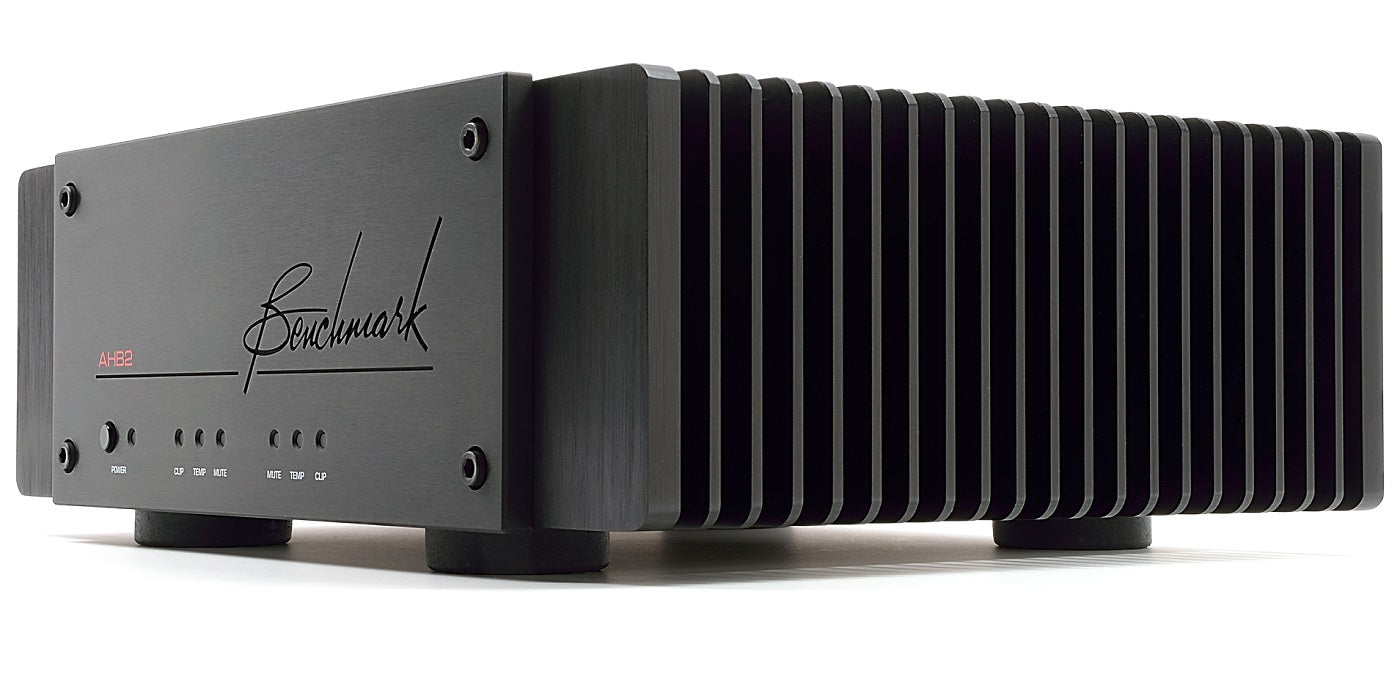Buy one component and save 10% on up to 2 cables. Buy 2 components and get 4 free cables. Free shipping on USA orders over $700.
Buy one component and save 10% on up to 2 cables. Buy 2 components and get 4 free cables. Free shipping on USA orders over $700.
Uncorrelated Noise Summation
by Benchmark Media Systems November 15, 2022
Use the tools below as you follow each example.
Example 1:
A Benchmark DAC3 has a SNR of 127 dB. It feeds a Benchmark AHB2 power amplifier with a SNR of 132 dB. The gain staging is set so that the DAC and power amplifier clip at the same time. We enter both signal to noise ratios (in dB) as negative numbers. The result is -125.8 dB (try it). This is the SNR of the combined system (expressed in dB relative to full output).
The SNR of the amplifier is 5 dB better than that of the DAC. When these two devices are connected together with an optimal gain relationship, the combined system is 1.2 dB noisier than the DAC. This means that the amplifier has only degraded the noise performance of the DAC by 1.2 dB in this combined system.
Example 2:
A DAC with a SNR of 127 dB feeds a power amplifier with a SNR of 105 dB. Enter both as negative numbers and the result will be -104.97 dB. We could say that the DAC degrades the performance of the amplifier by just 0.03 dB or we could say that the amplifier degrades the performance of the DAC by 22.03 dB. This shows that the high-performance DAC cannot be fully appreciated when it is driving an amplifier with a much poorer SNR.
An audio chain is never quite as strong as its weakest link.
Example 3:
A DAC with a SNR of 127 dB feeds a power amplifier with a SNR of 127 dB. Enter both as negative numbers and the result will be -123.99 dB. When two equal noise sources are summed together, the combined performance is degraded by 3.01 dB. Enter 0 dB and 0 dB and the result will be 3.01 dB (indicating a 3.01 dB increase in noise).
Example 4:
In the voltage summation tool enter 1 V and 1 V. The result will be 1.4142. Convert this to dB and you will have 3.01 dB (the same result we calculated in Example 3).
Example 5:
When driving an 8-ohm load, the output noise of the AHB2 power amplifier is -112 dBW. If we run the amplifier in bridged mono, we have two output channels driving a single speaker differentially. The two output channels of the AHB2 produce uncorrelated white noise, so we can use our tool to sum these noise signals. AC line hum and buzz would be not be uncorrelated, but these are absent from the noise floor of the AHB2.
The two white noise sources (formed by the two output channels) are in series and can be summed using our tool. Enter -112 dB for both noise sources and the result will be -109 dBW at the bridged mono output. The 8-ohm bridged mono output of the AHB2 is 380W which is 26 dBW. The difference between 26 dBW and -109dBW is 135 dB. This number, 135 dB, is the signal to noise ratio of the AHB2 when it is running in bridged mono mode driving an 8-ohm load. In bridged mono mode, the signal level increases by almost 6 dB, but the summed noise only increases by 3 dB. This means that the SNR of the amplifier is actually 3 dB higher in bridged mono mode (135 dB mono, 132 dB stereo). The total output noise coming from the speaker will be 3 dB higher, but the music can play 6 dB louder.
Leave a comment
Comments will be approved before showing up.




